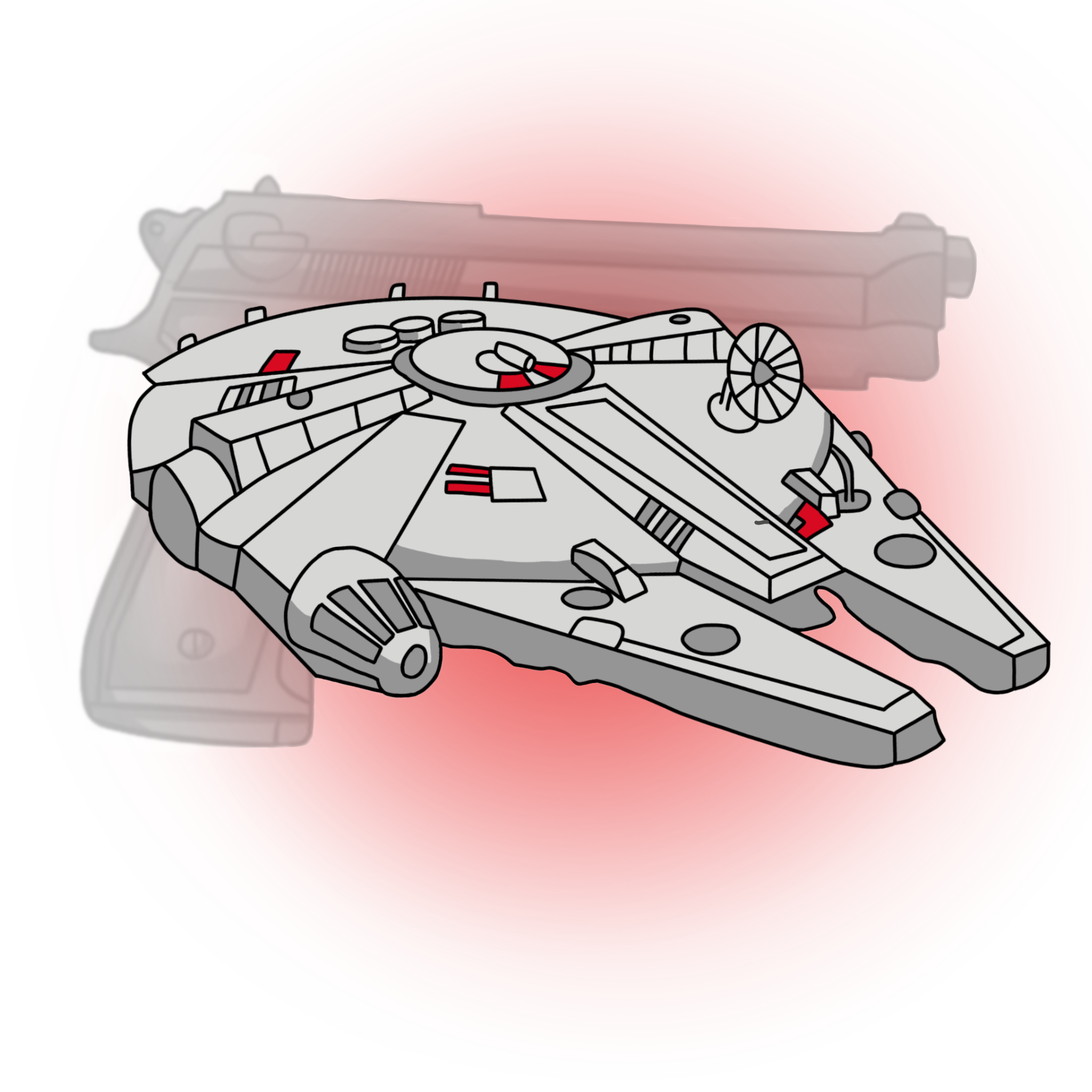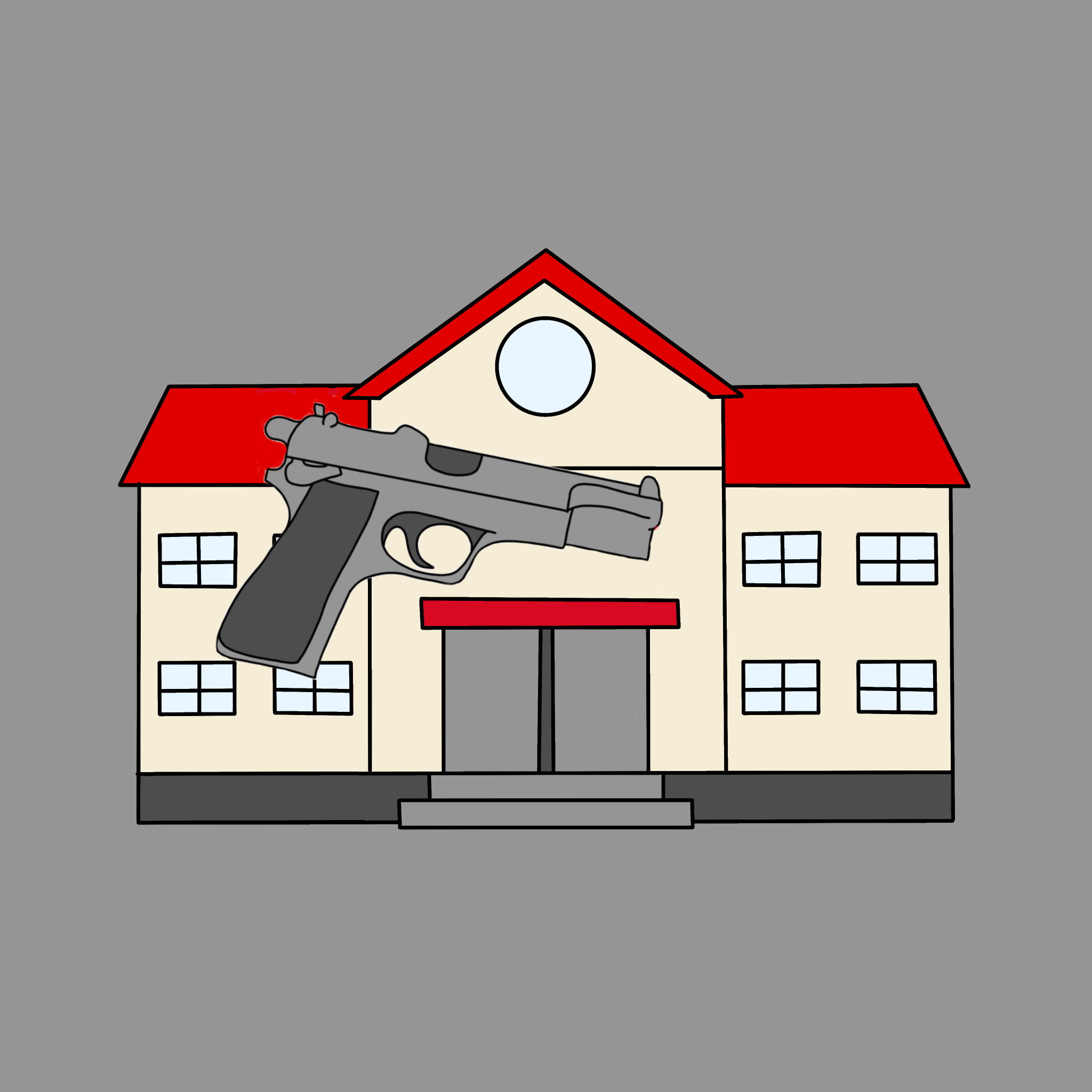Since its debut in 1977, Star Wars has captivated audiences around the world with its advanced technology, unique characters, and unforgettable one-liners. But even as Anakin Skywalker wrestles with Count Dooku over two lightsabers and Luke Skywalker fire the torpedo that destroyed a whole planet, the work (or rather bloodshed) inflicted by blasters remains inconspicuous. In the Star Wars universe, blasters are fictional energy-based weapons powered by an energy cell or power pack. When the trigger is pulled, blasters generate and propel superheated plasma or energy particles from a barrel or emitter as bolts of energy that burn a hole through their victims and cauterize their organs. Despite orchestrating the rise of Star Wars, blasters evolved over time to show the complexity of major protagonists murdering in cold blood on their journey for “the greater good”.
In the original 1977 release of Star Wars: Episode IV - A New Hope, wisecracking smuggler Han Solo, portrayed by Harrison Ford, finds himself cornered by Greedo, a Rodian bounty hunter commissioned by crime lord Jabba the Hutt seeking to collect a debt. In the original theatrical release, Han shoots Greedo under the table first, quickly dispatching Greedo and narrowly escaping danger. However, in subsequent re-releases and blue-ray editions of the film, the scene was altered to show Greedo shooting first, with Han narrowly dodging the shot and then firing in self-defense. Inspired by the real-life counterpart Mauser C96, Han Solo’s blaster pistol DL-44 pistol has helped Han escape the shadiest situations. However, this scene has sparked some controversy. On one hand, people wanted to see the ruthless side of Han Solo–a smuggler who only fends for himself which helps pave the way for his redemption. However, others argued for the inner character and morale of Han Solo, with Goerge Lucas eventually commenting that he “never designed Han to be a ruthless killer”. If Han shot first, not only will this lower his reputation among smugglers and possibly the rebel alliance, his low credibility will affect his future bounty runs. Meanwhile, if Greedo shot first, the event can be interpreted as Han’s quick reactions along with the greed of the Hutt Cartel. Regardless, firing any blaster in this context vilifies the perpetrator and brings a menacing connotation to firearms.
In season 2 of The Mandalorian, Mayfeld, a former Imperial sharpshooter, is forced to confront his past and face the officer responsible for his unit’s deaths. The officer, seemingly unrepentant, makes condescending remarks about the deaths, triggering Mayfeld’s rage. In a moment of catharsis, Mayfeld shoots the officer, showing that his allegiances lie with his own moral compass rather than with the Empire or even the rebellion. Wielding the Rodian DT-12, Mayfeld demonstrates the significance of a blaster shot and the transformation of themes in Star Wars. Much like Han Solo, Mayfeld is the hero of the segment and sets off a chain of events that eventually leads to the downfall of the empire, glorifying his use of gun violence. Unlike Han Solo, however, Mayfel is meant to be an antihero who serves his morals instead of a greater cause. However, this reckless act also jeopardizes the mission, forcing the Mandalorian to draw weapons and fight off overwhelming imperial forces. Even if an officer is guilty of reckless endangerment, U.S. laws indicate it is usually not in the hand of the victim to determine their survival. The show creates tension by showing the similarities between the imperial officer and Mayfeld, as both shared the same goal of unifying the galaxy yet both used different means to achieve it. The officer’s condescending tone highlights the possibility of Mayfeld’s greed for personal satisfaction for revenge and popularity over the greater good. At the end of the day, Mayfeld’s blaster silences suspicions of his allegiance and draws an ironic similarity between him and the imperials.
In the Disney+ TV show Andor, Cassian Andor was threatened by two inebriated off-duty imperial officers. Playing off of their gullibility, Cassian Andor killed an officer by snapping his neck to the ground. With tears streaming down his face, the author begged to join his partner and Andor executed him without hesitation. Wielding the K-16 Bryar Pistol, Andor is a long way off from his patriotic self in Rogue One. A smuggler by trade and a ruthless killer at best, Cassian Andor was just a mercenary making his way to the galaxy in pursuit of imperial credits. Unlike the other protagonists, Cassian Andor did not trust in any cause, believing all of them to be corrupt beyond saving. The show clearly moves away from traditional values of the significance of blasters as Andor’s willingness to kill warped the image of a righteous hero. Despite recognizing the officers under the influence of alcohol, Andor’s disdain for an unbalanced society questions his ethical implications in the first episode of the show, setting up a character arc that redeems Andor from a cruel mercenary to a reactionary rebel.
The violence of these three shots is underestimated, especially in the context of such a large franchise. However, Cassian Andor’s survival ultimately led to Rogue One and the survival of the rebel fleet, encouraging Han Solo’s rescue, and later Mayfeld’s assistance to hunt down imperial remnants. If all these events are interconnected and eventually led to 3 major wars in Star Wars, the franchise clearly outlines the lasting impact of gun violence. As the use of a gun led to the assassination of Archduke Ferdinand and the conflict of 2 world wars, gun control becomes increasingly important as the tension between countries today becomes even tighter.
Written by Oneal Wang

 Introduction
Introduction